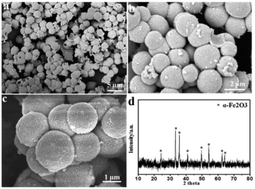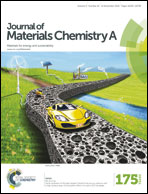Phase transition of hollow-porous α-Fe2O3 microsphere based anodes for lithium ion batteries during high rate cycling†
Abstract
In the present paper, hollow-porous α-Fe2O3 microspheres are prepared via cation etching of zinc citrate microspheres and subsequent thermal treatment. The superior performance of the as-obtained α-Fe2O3 microspheres as an anode material for lithium ion batteries is evaluated. After 1000 cycles, the capacity still remains more than 1100 mA h g−1 at a current rate of 1 A g−1. Meanwhile, the crystal size induced phase transition of Fe2O3 microspheres (α → γ → β) is observed during cycling by the measurements of ex situ XRD and TEM, which is responsible for their abnormal performance fluctuation.


 Please wait while we load your content...
Please wait while we load your content...